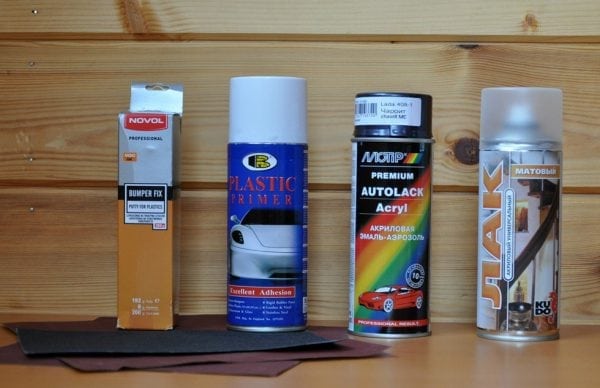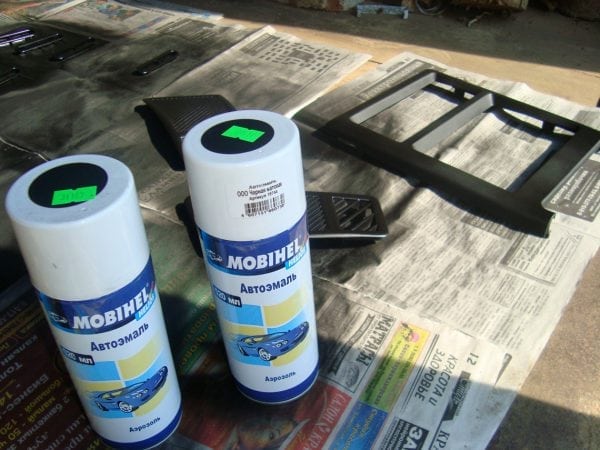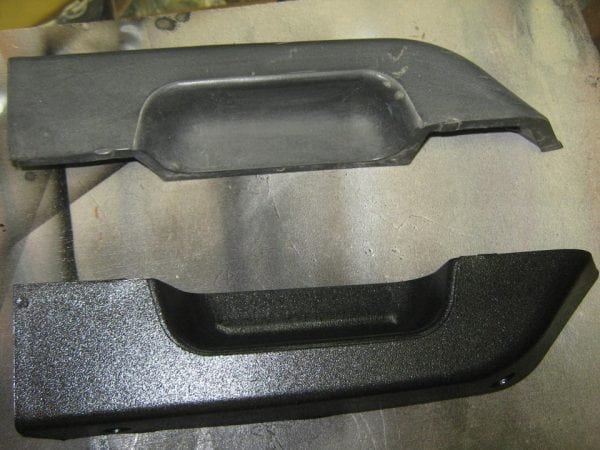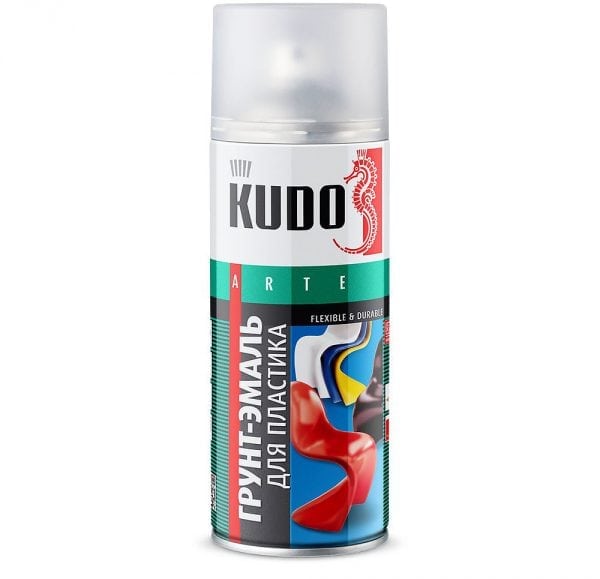Plastic things are found in everyday life, because this material is environmentally friendly, cheap, strong and durable. But, despite its strength characteristics, under the influence of the environment, plastic fades, becomes covered with cracks and scratches. To restore the lost decor or give the material additional protection, plastic paint is used.
- Areas of use
- Varieties of coloring compounds
- What to look for when choosing
- Do I need to be primed
- Necessary materials
- Painting process
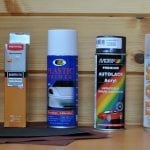
Areas of use
The range of use of dye for plastic is quite wide, but most often it is used:
- For painting dashboards of boats and cars. Painting panels is necessary not only for the purpose of decoration, but also to give them additional strength. This is especially true for panels and other plastic parts of boats, which are located on the deck and are exposed to the weather.
- In order to decorate various household items and interior decoration. Dyes for plastic can decorate furniture, beautifully design wall panels or paint plastic bottles. From such bottles, craftsmen create real works of art, skillfully combining the colors of produced bottles and additional coloring.
Paints for plastic can be used everywhere, the main thing is to choose the type of dye in accordance with the type of plastic and the operating conditions of the product.
to contents ↑Varieties of coloring compounds
Depending on the destination, the following types of compounds are distinguished:
- ABS. This polymer has both the properties of soil and enamel, it can be used both as a decorative finish, and to increase adhesion to paint.
- Abrasion resistant. It is made on the basis of polyurethane resins with additives that give the composition additional strength. It is used for surfaces exposed to heavy load, resistant to abrasion.
- Tactile (soft touch). Such a plastic paint after drying forms a velvety matte structure, very pleasant to the touch. Soft touch acrylic paint is widely used for decoration, creating a feeling of comfort and visually smoothing sharp corners. She painted car interiors, household appliances and painted plastic bottles.
- Structural. The application of structural coloring compositions makes it possible to mask defects that arise on the surface, because when this coloring substance dries, a beautiful surface with “pimples” is obtained. Structural mixtures are used both for self-decoration and for improving adhesion before final painting.
- Powder. The use of powder dyes is not suitable for all types of plastics, but only for heat-resistant ones. For example, plastic bottles cannot be painted with this method - they will melt at high temperatures. Powder coating is carried out in the chamber under the influence of high temperatures, so that the powder particles melt, reliably adhering to the base. In this way, it is possible to increase the strength of parts that are constantly subject to abrasion or atmospheric effects. As a rule, the dashboards of ships and boats to give them additional strength are painted in this way.
From the whole variety of dyes, it is necessary to choose the type that will most suit the painted base, whether it is a wall panel or a plastic bottle.
to contents ↑What to look for when choosing
When deciding which type of dye to purchase, you must carefully familiarize yourself with the main characteristics of the composition indicated on the package:
- Adhesion. Most dyes have good adhesion to the surface, differ only in the degree of adhesive properties. When choosing, you need to consider what kind of composition and smoothness the plastic object is planned to be painted.
- Compatibility with the base. Enamel for plastic should be suitable in composition to the type of surface to be painted or to the soil applied to it. Failure to comply with this rule will lead to the fact that the decorative layer will quickly crack or go bubbles.
- Spreadability and hiding power. These parameters show how even, with a thick layer the paint lays on the material.
- Water resistance. All acrylic paints and varnishes used for plastic surfaces are water resistant; after drying, the resulting film can be washed. But for products in high humidity, in order to increase water resistance, additional additives are added, often polyurethane.
- Aesthetics. Depending on what kind of result you need to get, you can use a plastic paint that gives a flat, smooth surface, or choose a structural paint.
- Compliance basis. The instructions always indicate what kind of plastic can be painted with this tool.
to contents ↑
Do I need to be primed
It is known that preparation for painting for all coloring agents consists of the following steps:
- cleaning;
- grinding;
- degreasing;
- primers.
Some varieties of plastic do not need priming - they can be painted immediately after degreasing, skipping one of the stages of preparation. But how to determine whether to prime or not?
At home, this can be done in two ways:
- Set fire to a small plastic piece. If during burning the flame smokes a lot, then priming is not necessary. This should be noted for those who prefer to primer plastic bottles to improve the quality of work. When burning, the bottles are very spoiled, so it is quite possible to save time and money by skipping the primer.
- Dip in water. Drowned plastic parts do not need to be applied with soil mixtures.
to contents ↑Important! If it is not possible to carry out these simple tests, for example, if wall panels have been installed for a long time and there are no pieces of residue for examination, then it is recommended not to neglect the primer work.
Necessary materials
Before you start painting, you need to stock up on the following tools and materials:
- A set of "skins" of different grain sizes. When preparing the material, they can give the base the necessary smoothness and roughness.
- Water and detergent (it is better to take a neutral soap).
- White spirit or any other plastic degreaser.
- Masking tape (if you need to paint not the entire product, but only part of it).
- Painting tool: spray gun, roller, brush or spray can.
Having prepared everything you need, you can begin to work.
to contents ↑Painting process
Before applying the paint, preparation of the base is necessary. To do this, the surface needs:
- To wash. Small parts are immersed in water, and a portable car wash is recommended for large areas.
- To process with a "skin". Depending on the smoothness, the base is either polished or, on the contrary, scratched with sandpaper.
- Degrease. White spirit is most commonly used for this purpose, but any other alcohol-based degreaser can be used.
- Primer if necessary. If in doubt, to primer or not to primer, then a primer should be applied. An extra primer will only improve the quality of the final result.
- Dry and you can start painting.
When painting, it is recommended to consider the following:
- What is the load on the product. The greater the likelihood of abrasion or damage to the surface, the more layers must be applied.
- A new layer can be applied only after the complete drying has already been applied.
- It is recommended to use the painted product one day after applying the last coat. During this time, the complete polymerization of the material will occur, the decorative film will acquire all the strength characteristics.
By following these simple recommendations, you can make high-quality and beautiful coloring of the product. Using paints for plastic products, you can not only give a second life to old things, but also additionally strengthen plastic parts.

